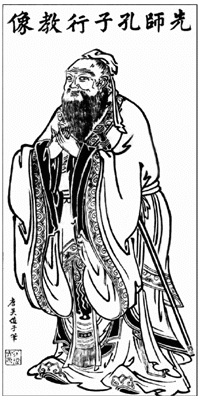⋅ ⋅the scholarly kitchen
Confucius 02 (Photo credit: Wikipedia)
So what’s this all about? One version of the story tells of the new forms that digital media make possible. Once upon a time, in the Print Era, most text-based publications fell into relatively well-defined categories, aka “buckets” or “containers” — the book, the article, the magazine, the newspaper. But with digital media you can do anything you want to do; you can even go “bucketless” and develop your own format. This is all well and good, and if my sense of irony is getting the better of me, it’s because the long road from editorial idea to successful business enterprise is infrequently travelled and often not even anticipated. But as Mao said, or Confucius, or someone, a long journey begins with the first step.
Thus, the Times is experimenting with the medium-form text. It’s a good idea, and I wish them well. But it’s the backdrop that intrigues me most of all, inasmuch as these texts will be sold as content, not supported by advertising. This is a very big item, more important than the switch from print to digital, as it points to the growing interest of traditionally advertising-supported businesses in the entirely different model of paid content. This shift, if it truly can be accomplished, will change everything.
People unfamiliar with how the media industry works, may not know that for many media ventures, the product is not the World Series or episodes of CSI or the news content of the Washington Post. The product is the audience, which is attracted, aggregated, packaged, and then sold. The customer is the advertiser. Thus, as a regular reader of the New York Times and viewer of Yankee baseball, my attention is being directed to the presentations of Manhattan retail stores, myriad financial services companies, and Ford, Toyota, and Verizon Wireless. Some of these advertisements apparently have worked on me (I bought my wife’s Christmas gift at a New York store, we own a Toyota, etc.). Being the product is not necessarily a bad thing, but it is a different thing from being the customer.
Full article here.

No comments:
Post a Comment